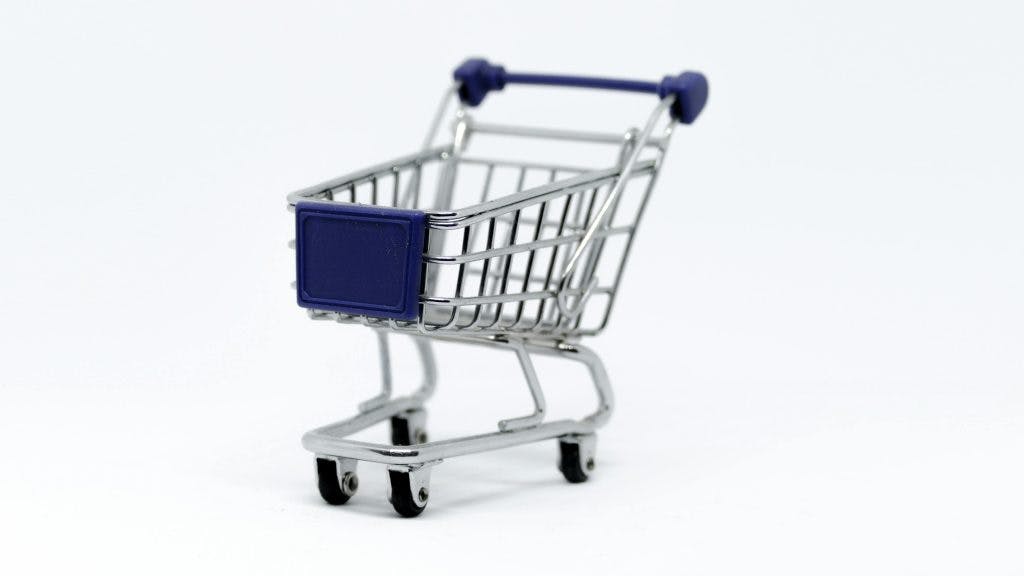How To Optimise Google Shopping Ads
If you’re a business selling products through an e-commerce website doing Pay-Per-Click (PPC) advertising and have yet to explore Google Shopping campaigns, you’re missing a valuable opportunity.

Shopping campaigns have been around for a while and can be a great way to drive additional traffic and sales via your website. However, it is only recently that Google has expanded its automated bidding solutions by integrating them into its fully-automated Performance Max campaign type. Additionally, Merchant Center has been upgraded to Merchant Center Next providing a simpler, streamlined, and evolving platform experience redesigned for retailers to more easily manage how their products appear.
Therefore, if you’re revisiting your shopping campaigns to make the most of these new functionalities, it could also be a good time to review their overall setup, ensuring your ads adhere to best practices, and are fully optimised to maximise performance.
How To Create A Google Shopping Feed & Keep It Up-To-Date
Product data naturally changes over time, so if your feed isn’t kept up-to-date, you risk advertising incorrect prices or promoting items that are out of stock. Merchant Center allows you to share a file that houses all your product data to create a Google Shopping feed. This can then be used in supplemental feeds - linked to a primary feed - alongside the Products API to update product data.
In July 2024, a beta version of the Content API for Shopping - known as the Merchant API - was announced. This new feature has been designed to offer faster response times and the ability to update multiple products in real time, removing the need to manage separate supplemental feeds. You can also schedule automatic daily updates, which is useful if your product inventory frequently changes.
Fix Any Errors In Your Google Shopping Feed
Sometimes errors can occur, so it is important to troubleshoot any issues relating to creating, formatting, and uploading your feed to ensure that all products are included in your advertising efforts, as part of ongoing feed management. Examples of feed issues can span from basic mistakes to insufficient product data and processing errors, which can have a detrimental effect on your shopping ads. Google assists with this by providing a handy feed debugging tool, which can point you in the right direction for resolution, with additional opportunities for quick testing and validating your feeds through Merchant Center. Your product data and website must comply with Google’s product data specifications and shopping policy requirements to avoid warnings, disapprovals, limited visibility, or even suspension.
Merchant Center Next
Merchant Center Next has been officially rolled out to new and existing Google Shopping Merchant accounts - fully replacing Merchant Center from September 2024 - featuring capabilities like crawling a website to automatically detect product data to make feed optimisation even easier. This updated process aims to minimise feed errors and reduce the time it takes to build and maintain a feed; offering simplified product diagnostics, new insight reports, generative AI imagery tools, and the ability to make edits to product attributes directly within the Merchant Center interface. As part of the revamp, Google introduced a new metric called ‘Click Potential’ that leverages historical data to predict the likelihood of clicks on your Product Listing Ads (PLAs), highlighting those with low-click potential that may require attention.
Optimise Your Product Names And Descriptions
Making a strong first impression is crucial, with title optimisation paired with detailed yet punchy descriptions the secret sauce for shoppers. The product data you provide influences how your ads perform, with Google closely matching it to a user’s search query. Therefore, it is important to make sure the information accurately reflects what you’re trying to sell and how people may be searching to find it.

Create a positive purchase experience by using the same product title and description that features on your landing page, taking into consideration the keywords that your customers might be searching for. It is also considered best practice to include key details such as brand names, age group, size type, and colour at the beginning of your product title to provide users with the most relevant information upfront.
Apply Negative Keywords
With a traditional search campaign, you choose the keywords you want to target, but with a Google Shopping ads campaign, it relies on the data from your product feed to determine which searches your ads appear for. Compiling a strong negative keyword list can increase the performance of your shopping campaigns and reduce costs by preventing your ads from showing for specific queries. You can apply negative keywords at campaign level or ad group level using the exact, phrase, or broad keyword match modifiers. These can be identified by running regular Search Query Reports (SQRs), pulling data from the Search Terms Report section in Google Ads, to assess any potential Google Shopping keywords that may not be a good fit for your campaign. Keyword Planner is also a valuable tool for conducting wider research into possible terms that could be included in your negative keyword list.
Use High Quality Images
Google Shopping is a highly visual experience with the product image taking up the majority of ad space, significantly impacting an ads Click-Through-Rate (CTR). Displaying quality imagery has become paramount in the rise of Google Shopping image search, and plays a pivotal role in a customer’s purchase decision, which is typically guided by the following attributes in the following order: image, price, and title. Therefore, your images must be relevant, clear, free of watermarks, and adhere to specific product image size specifications. Since shoppers are unable to touch or see the product, having a healthy product feed with well-optimised images, such as adding extra images to your listings using the additional_image_link attribute or retouching images, can be extremely beneficial. If there are several competitors selling the same product as you, it is also a good idea to use different imagery to stand out from the crowd.
Google Shopping Image Search
The concept of searching what you see has revolutionised the Google Shopping landscape by offering users a fresh approach to finding and purchasing products online.

Google Lens has paved the way for image search over text-based queries, leveraging AI technology to visually search for products through the Google app or, more recently, via the Chrome browser. Did you know 20% of all Google Lens searches are shopping-related, which has evolved to prominently display key information once a product has been identified in your photo, including price comparisons, current deals, product reviews, and where to buy. It is also possible to combine image and text searches to narrow down your search results. This enhanced search experience is currently limited to select countries, with results still showcasing paid shopping ads, allowing retailers to highlight their most relevant products.
How To Get Google Shopping Reviews
Product reviews on Google Shopping help enhance your ads by displaying both product and seller ratings in results, which are based on a 5-star rating system compiled using feedback from reputable third-party sources, as well as users on Google. Seller ratings need to be 3.5 stars or higher to appear, with the aim to assist individuals with finding businesses that provide high-quality customer experiences. If your seller rating is low, it is worth taking steps to strengthen your product reviews such as verifying your business profile, encouraging customers to leave a review, and responding to reviews to build trust.Google Customer Reviews is a complimentary feature within Merchant Center that assists with the review collection process. Outreach strategies such as sharing a link in thank you emails, mentioning it at the end of a chat interaction, or including it within your receipts can also be an effective way to get feedback.
Assign Custom Labels For Profit Margins
Custom labels in both standard shopping and Performance Max campaigns are extra attributes that you can apply to your feed in Merchant Center that involves the subdivision of Google Shopping product categories based on the values you choose, which may vary depending on your industry or business type. Not all products are created equally, and it is important to identify which items have higher margins so you can bid more aggressively on those that sell well to maximise profits. These labels are for the retailers reference only, and you can create up to five custom labels, each with one value per product, which can be used to categorise items as seasonal, promotion, on clearance, or bestsellers that you want to push. Best practice is to use the same custom labels consistently across your Merchant Center account, starting with a few broader categories, and gradually refining your approach as your campaigns generate results.
Group Similar Products Into Campaigns
By default, shopping campaigns promote all products in your feed using the same bidding strategy. However, it is far more effective to be selective by breaking them down into close knit groups with similar margins for greater control over ads optimisation. The product category attribute is a classification system that can override product listings in specific situations, such as targeting Google Ads campaigns.Reassigning products within your campaign structure by segmenting, including, or excluding groups using product category data can make it easier for shoppers to find what they are searching for, whilst helping retailers better reach their target audience. The key is masteringGoogle’s Taxonomy, a list of categories used to help compartmentalise products in a shopping feed - which could lower your product ad costs, and see you outperform your competitors across the shopping network.
For more information about how to get your products on Google Shopping, we recommend visiting the section above on how to create a Google Shopping feed directly in Merchant Center, which can be linked to your Google Ads account for use in your Google Shopping campaigns.
Use An Automated Bid Strategy
Automated bidding strategies offer more flexibility than ever before by simplifying the process of setting bids through auction-time signals. These signals, such as device, location, and time of day, help capture the unique context of each search to achieve your performance objectives. If you have thousands of products or are limited by time, then it is worth exploring the automated bidding options open to shopping campaigns that can help increase clicks, improve visibility, and drive conversions. Automated bid strategies learn as they go and make informed decisions for future bids based on historical account data, taking the legwork out of manually updating bids at ad group or keyword level. From September 2024, Google discontinued the Enhanced CPC bid strategy for search and display campaigns in favour of Smart Bidding solutions such as Maximise Conversions, Target CPA, Maximise Conversion Value, and Target ROAS to efficiently optimise advertising spend and drive results.
NEED HELP MAXIMISING YOUR SHOPPING ADS PERFORMANCE?